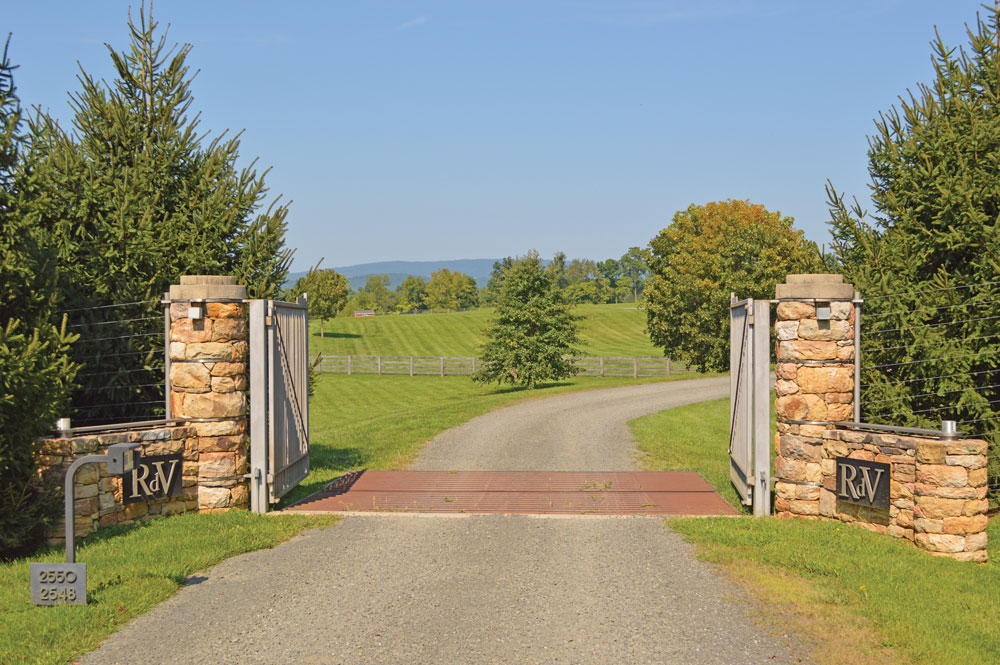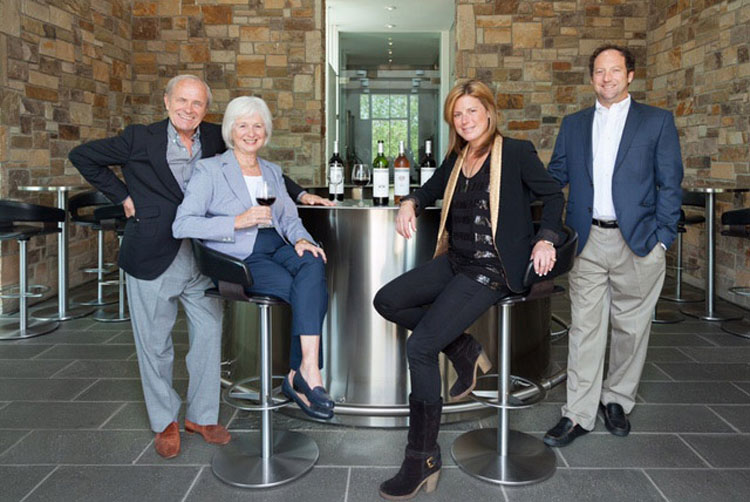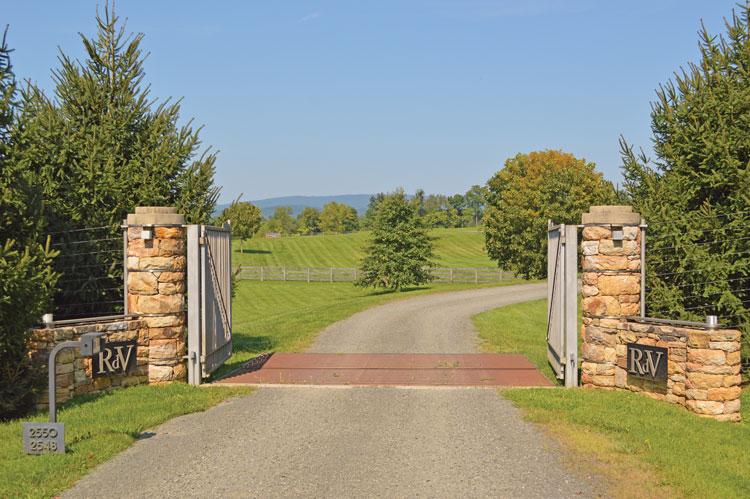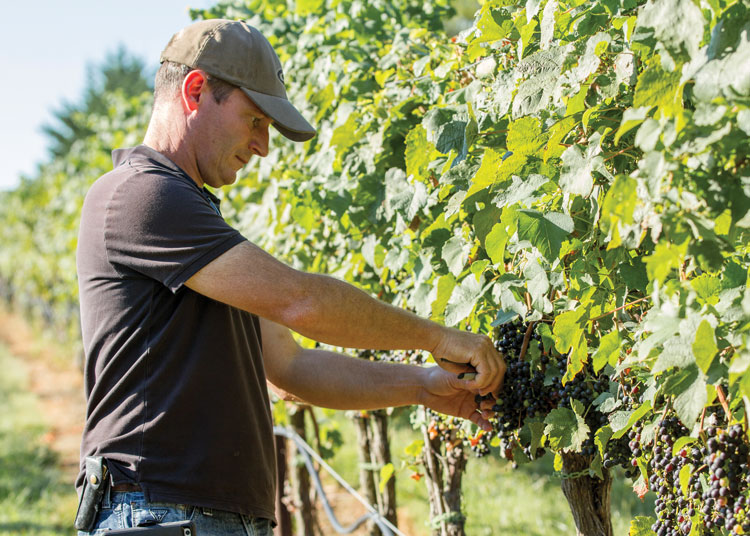The Business of Wine

By Peter Leonard-Morgan
Almost 400 years ago, the first colonial legislative assembly, the House of Burgesses, passed what was known as Acte 12, requiring that all households in Virginia plant 10 vines of European Vitis Vinifera grapes or be punished for not doing so.
Such decrees were committed to the history books long ago, yet this marked the beginning of efforts, which, other than a 17-year hiatus during the Prohibition Era, have continued unabated to this day, to cultivate and develop grapevines in Virginia. Those efforts were met with continued failure thanks to a harsh climate, difficult growing conditions and the dreaded phylloxera pest, rendering European varietals unsuitable for successful wine production on America’s East Coast.
With failure, however, came gradual progress. During the 1800s, for example, a hardy Virginia grape was discovered by one Doctor Norton, which bears his name to this day. This grape produced a quality wine, winning awards both domestically and on the international stage.
Despite the fact that Virginia produces less than 1 percent of all wine made in the United States—California not surprisingly claiming the lion’s share—the Commonwealth boasts in excess of 260 boutique wineries and has the fifth largest winery population in the nation, resulting in the production of more than 1.6 million gallons of wine in 2016. These numbers may suggest that establishing a vineyard is a fairly simple proposition; the fact is that it is anything but and absolutely not for the faint of heart. So, what is the business of wine?
Boxwood Estate Winery

Siblings Rachel and Sean Martin run Middleburg’s family owned Boxwood Winery, set on the glorious former horse farm of General Billy Mitchell, father of the United States Air Force. Rachel Executive Vice President, worked to establish the Middleburg AVA, or American Viticultural Area, in 2012, a wine producing region designated by the Federal Alcohol and Tobacco Tax and Trade Bureau (TTB), part of the United States Treasury, a process which took no less than six years to accomplish.
Her brother Sean, is Vice President of Boxwood, and together with their mother Rita Cooke and stepfather John Kent Cooke, they acquired the property in 2001 with the sole purpose of establishing a high-quality vineyard and winery.
Engaging the services of renowned viticulturist, Lucy Morton, they planted an initial eight acres of Vinis Vinifera in 2004 resulting in their first vintage in 2006. Since that initial planting, the estate has grown to 26 acres under vine today, bottling around 5,000 cases annually.
Boxwood’s unique, modernist tasting room and winery was designed by Washington, D.C., architect, Hugh Newell Jacobsen. To round out the mission of developing great wines to complement this special venue, the family hired Stéphane Derenoncourt, an established Bordeaux winemaker, as consultant.
Additionally, Boxwood has established tasting rooms in Reston Town Center and the National Harbor, where its customers sample wines from all over the world in an atmosphere and style reminiscent of Boxwood.
So, what did it take to get here? Colossal amounts of energy and vision, supported by significant initial and ongoing capital investment, together with faith in experts in their chosen fields to grow the best grapes in the best locations.mounts of energy and vision, supported by significant initial and ongoing capital investment, together with faith in experts in their chosen fields to grow the best grapes in the best locations.
The Martins assert that it takes at least a decade of commitment to go from initial planting to first profits. That may explain why there were smiles all around this summer for the winery’s 10th anniversary! They are vested in their community, with Sean sitting on Middleburg’s Economic Development Advisory Committee and the winery regularly supporting various town events.
RdV Vineyards And Winery

RdV, in the bucolic hills near Delaplane, is the dream realization of its owner and founder, Rutger de Vink. De Vink, a retired Recon Marine, sought out the perfect 100 acres he wanted, finding a fifth generation Angus cattle farm with ideal terroir and orientation. He went to work on the owners, convincing them that they should allow him to buy it. His persistence paid off, and, 16 years later, one of Virginia’s finest vineyards produces high quality wines in limited amounts, in an environment that exudes the impression of serious financial investment.
RdV produces two wines, both Bordeaux style red blends, priced at $125 and $75, with tastings at $50 per person. Bottling 2,200cases each year, RdV clearly sees its market as the very upper end.
Estate director, master sommelier and graduate of the Culinary School of America, Jarad Slipp joined RdV in 2014 following illustrious careers at some of the world’s great restaurants. Slipp is serious about wine. He explains that RdV, from an investment standpoint, isn’t looking at a profit plan measured in years but a legacy measured in generations. De Vink did not go into this with plans to package a top tier business into a saleable asset. He sees himself as a steward who will pass on something unique, much like a Patek Philippe or an old master.
After the Marines, de Vink did his time as an apprentice under respected Linden Vineyards founder Jim Law, so that when the time came to launch RdV, he understood the process from start to finish.
Only one French cooper supplies RdV with its oak barrels, and in order to ensure the best possible blending, each year, one of France’s most respected enologists visits the winery to blend from various barrels in ratios which will produce the ideal balance.
The barrel cave at RdV is an underground complex created by blasting into solid granite. That granite surrounding the cave ensures that temperatures remain constantly low all year. Like Boxwood, RdV also has its own bottling equipment, a machine which is used three days a year but is considered a necessity in a place where only the best will do.
Greenhill Winery & Vineyards

In 2012, aeronautical communications entrepreneur David Greenhill, who had been scouring the Virginia countryside for years to locate the perfect winery, contacted respected, third-generation French master winemaker and viticulturist, Sébastien Marquet. When Greenhill stumbled upon the small, family-owned vineyard and winery in Middleburg, he was convinced it was “the one.”
Aided by Marquet’s expertise, Greenhill immediately set about turning his vision into reality. Isabelle Truchon, Marquet’s partner and renowned equine artist, was engaged to develop a Greenhill brand from the ground up. She re-designed the interior of the member’s clubhouse, an important Revolutionary Era stone manor which had been, until then, the previous owner’s home. Now, as the newly branded Greenhill Winery and Vineyards, they began the design and build of a custom, two-story tasting room to take the place of the smaller, existing one which they re-purposed into a farm store, along with a dedicated winery with unique barrel room, all of which opened this past January. New French oak barrels were ordered, as well as the finest European wine making equipment and stainless-steel tanks.
Distinctive, creamy white Charolais cattle, a breed which originates from Marquet’s native Burgundy in France, roam the fields near the vineyards. They not only provide a rustic background for tasting room guests but also excellent meat for sale at the farm store.
The original, ten-acre vineyard was supplemented by the planting of nine more acres under vine, while a 12-acre vineyard called Naked Valley, located between Charlottesville and Lynchburg, was acquired in order to grow additional grape varietals and add new flavors from this different terroir.
Initially, Marquet, who as well as being the winemaker-viticulturist is also the chief commercial officer at Greenhill, purchased grapes from other vineyards in order to blend sufficient wine for the fast-growing demand at the new property. The intervening years have seen healthy increases in harvest, allowing Marquet to bottle some 7,000 cases of wine varieties and blends including Chardonnay, a dry Riesling, Viognier, Seyval and Vidal Blancs, Cabernets Sauvignon and Franc, Merlot, Pinot Noir and Malbec.
According to Marquet, acquiring an existing operation provided some advantages over a green field site, in that there was a degree of infrastructure in place. However, Greenhill has committed significant capital and resources in this extreme makeover, with the goal of becoming profitable during the next few years. They’ve focused on carving out their own identity as a premium winemaking business and customer-centric facility. David’s also committed to local polo, both as player and patron, making Greenhill wine synonymous with the sport at great Great Meadow.
At Greenhill, as with other quality properties, customers can enjoy fine cheeses and charcuterie with a warm baguette to perfectly complement their favorite vintages. Add to that some local, live music on a Friday evening overlooking the scenic, distant Bull Run and Blue Ridge Mountain ranges, and one can see why so many people frequent these serene spots.
A clear picture emerges from this sampling of dedicated Virginia wine entrepreneurs: All have invested significant sums of money and made long-term personal commitments to see their businesses thrive and become fixtures in Northern Virginia. Local government support has been crucial to their successes, as has a healthy culture of camaraderie between wineries to help develop clusters and wine trails, further encouraging wine aficionados to explore these delightful destinations.
Moreover, each business runs its own version of a wine club, where members commit to purchasing a specific number of bottles each year. In return, these VIPs are the first to sip the latest vintages at members-only release parties, as well as enjoying other benefits, such as dedicated member areas, complimentary tastings and wine-themed evenings.
In 2015, 8,300 people were directly employed in the Virginia wine business, and $180 million in tax revenue was attributed to it based on more than $1 billion in revenues.
Gorgeous swathes of land are kept from overdevelopment by these clusters of delightful properties, in addition to providing destination seekers with beautiful places where they can enjoy the fruits of the labors of countless passionate, hard-working people. The cumulative effect is to generate significant economic bounty to rural areas, not simply as revenue for tasting rooms, but also business for local restaurants and stores, helping to maintain rural communities throughout the Commonwealth.
The business of wine is a complex one, nevertheless it shows no signs of discouraging new comers to this capital-intensive business, nor slowing down the expansion of existing operations. ML


